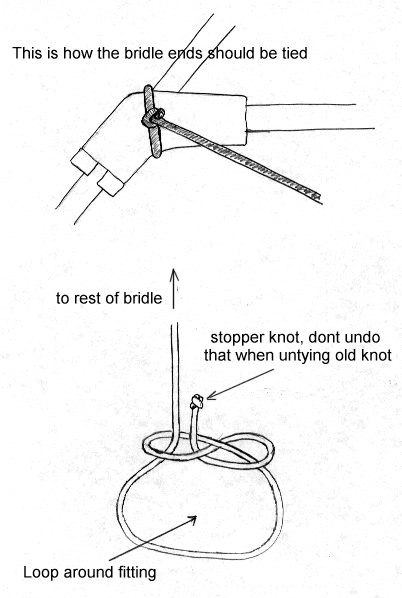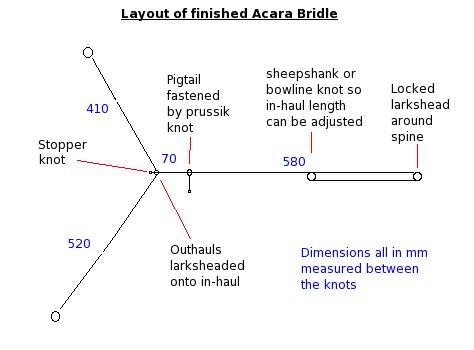
Acara
|
|
|
| Menu |
|
Home
About News Kites Kite Design Kite Making - Construction - Plans - Acara - Ram - Manta - Stingray - Thornback - Gallery Contributed Skateboards To-do Links |

CAVEAT EMPTOR - READ BEFORE BUILDING
Before you rush out to invest a small fortune in ripstop and carbon you should be aware that this is a fairly old school kite, while it is good at rotational moves like 540s, axels and steady in fades it is not like a modern pitch happy French kite. Feel free to slap some weight on it if you like but I don't want to mislead anyone, do not build this and then complain that it doesn't yo-yo or comete!
Acara Plans
Erik Recke (datenland) has created the following plans from my scanned bits of graph paper. They are available in pdf, dxf and Vectorworks file formats.
Thanks Erik!
If you use the pdf plan be sure to clear the tick box to Shrink oversized pages to paper size (Acrobat Reader, other pdf viewers may vary). If you do not, your plan will print out undersized! These pdfs have been created for A4 paper. If you want to reassure yourself that the size of your printouts are correct see this sketch with approximate dimensions (I just counted the squares on the scanned graph paper).
Acara, DXF format
Acara, Vectorworks format
Here are my original scanned scribbles if they are of use to anyone
Acara 1 of 8
Acara 2 of 8
Acara 3 of 8
Acara 4 of 8
Acara 5 of 8
Acara 6 of 8
Acara 7 of 8
Acara 8 of 8
Or... all joined in one huge file (right click and save-as)
Sail
I usually make sails from PC31 or Chikara. Chikara is nicer for higher wind kites since it has a little more stretch and excellent recovery so it soaks up gusts well.
I almost always make kites with overlapped taped seams. I use 3M tape (althoughBainbridge is good too) and I always rub the seams together to stick the tape well before stitching over with a serpentine stitch. The serpentine stitch seems to be unique to Bernina machines (I have a 1960's 730 Record) but the 3 stich zig-zag found on Pfaff and other machines would be just as good.
I always edge the trailing edge with a 0.5 inch wide strip of Chikara and put in a leech line of 150lb Spectra
Because the kite works best with a tight sail, rather than use bungee for the leading edges, I use a cord: I sew a piece of 150lb rok line between the leading edge dacron and the sail. I tie a stopper knot 0.5 inch from the last stitch to make a little pigtail. Next I take a length of rok line with a small loop in one end and larkshead it on to the pigtail using this to tension the sail so that it can be changed if it wears (although so far I've yet to see one wear out). Because I do this on most of my kites I'll be putting photos of this on the constuction pages.
Framing
For frames I usually prefer either Skyshark or Hi-mod, whatever use something fairly stiff for the spreaders especially. I designed the kite for straight spars so I don't recommend tapered rods, I especially discourage you from using tapered rods as spreaders.
If you try to build a high wind kite I used Skyshark 7P for the spreaders of my vented but found the kite was much nicer with Avia 2400 in the leading edges, the tips can bucket which smooths out the gusts with a slightly more flexible leading edge. Another possibility for stronger winds is a soft nylon sail (K42 or similar) with a strong but bendy frame such as Pro-sport, I have a kite like this which will bend into some strange shapes but will smooth out the gusts and fly in 20+mphwith nothing but 300lb lines to slow it down
- The kite if framed from 8, 82.5cm spars. The excess from the top spreader is ferruled onto the end of the spine.
- I cut the spines to length on the kite, trimming the extra piece.
- The top spreader is 570mm long
- The standoffs are 245mm long, 3mm carbon
- The c-clip below the top leading edge fitting is 322mm from the top of the spar
- The c-clip below the lower leading edge fitting is 200mm from the top of the spar
- I use Tradewinds leading edge connectors, iif you use APAs you will need to adjust their positions.
Bridling
The bridle I usually use is quite short and sensitive to change but for all that it's still my favourite. To avoid variations with different diameter frames I always use tradewinds fittings (theyre the same external size for 6mm and 8mm frames) and I tie the bridle around the fitting. This also has the advantage that it never slips or breaks free in high wind like a c-clip might.

I make the out-hauls from a single piece of bridle cord with a stopper knot at each end, measuring 1085mm between knots (just for your information, the loop around each leading edge fitting takes 65mm).
I make the in-haul from a 1000mm length of bridle cord with stopper knots at each end making a loop in one end with a sheepshank or a bowline then locked-larkshead this around the spine.
The end result is shown in the following diagram.

kitemaking/plans/acara.html last modified 19:57:15 30-Jul-2017

This work is licensed under a Creative Commons Attribution-NonCommercial-ShareAlike 2.0 England & Wales License.